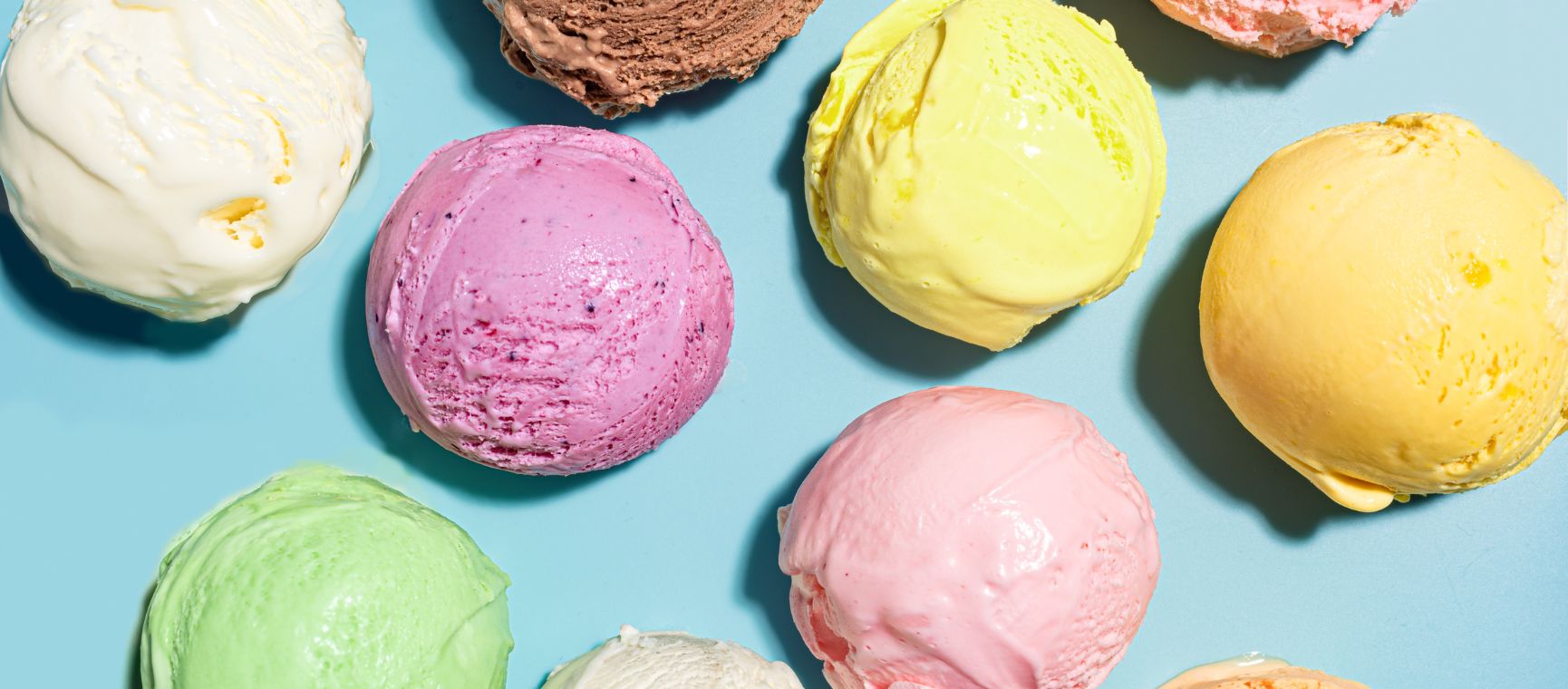
It’s the treat we turn to on sunny days, sad days, and “just because” days. But how do the different types of ice cream stack up when it comes to health?
“Ice cream isn’t typically considered a health food,” says specialist dietitian Nichola Ludlam-Raine, author of How Not to Eat Ultra-Processed, “but it can absolutely be enjoyed as part of a balanced diet. It provides calcium, iodine and some protein – especially in dairy-based varieties – and the enjoyment of eating foods you love matters for mental wellbeing.”
Of course, some options are better than others, particularly as we become more mindful of our intake. “Our calorie needs can decline over time, especially if we’re less active,” adds Ludlam-Raine. “So being aware of foods high in added sugars and saturated fats can help support heart health and a healthy weight.”
We asked the experts to help us rank ten of the UK’s favourite frozen desserts, from the most balanced choices to those best saved for a treat-yourself moment.
Cool, creamy and impressively filling, Greek yogurt ice cream is a clever upgrade from your normal ice cream.
“It’s higher in protein compared to regular ice cream, which can help with satiety,” says dietitian Priya Tew. “Some versions contain live cultures too (if they’ve not been heat treated), which is good news for your gut.”
Watch out for: Tartness in some recipes means extra sugar might be added to sweeten the deal. And “Greek-style” doesn’t always mean it’s strained yogurt so check the label before buying.
| Calories | 131kcal |
| Fat | 2.3g |
| Saturated fat | 1.5g |
| Sugar | 19.5g |
| Protein | 5.4g |
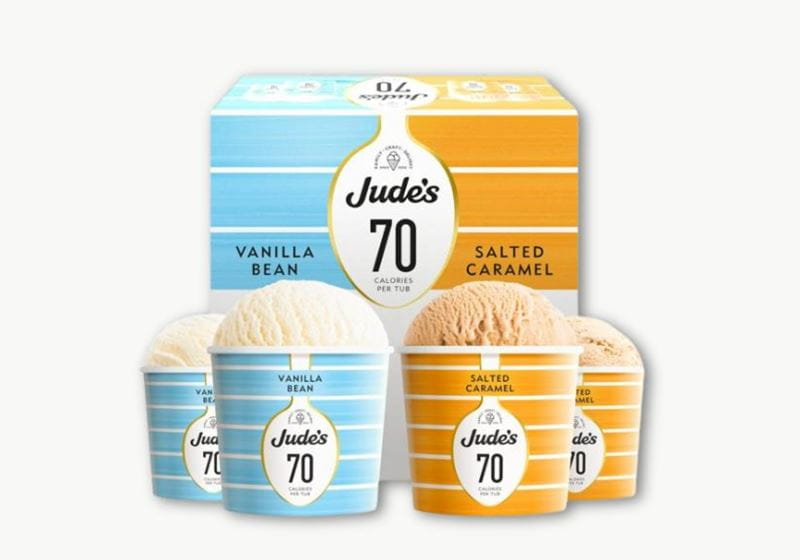
Ice cream with lower calories (e.g. Jude's or Halo Top) are often lower in sugar and fat, with extra protein or fibre to keep hunger pangs at bay. They’re ideal for those looking to lighten up dessert without ditching it entirely.
Watch out for: Sugar substitutes like erythritol or stevia may upset sensitive stomachs. And while some are surprisingly creamy, others definitely lose out on taste and can be a bit icy or chalky, which is disappointing. The solution? “Having a smaller amount of normal ice cream can he more satisfying,” advises Tew.
| Calories | 151kcal |
| Fat | 5.5g |
| Saturated fat | 2.2g |
| Sugar | 15g |
| Protein | 3.9g |
Perhaps one to choose post-workout or if you’re after a more filling scoop. “Protein helps with satiety and muscle repair,” says nutritionist and mindset coach Monica Kranner. “It can make a small portion feel more substantial.”
Not only do these tubs have added protein (often around 6-10g per 100g), but they tend to be lower in sugar and fat compared to traditional ice creams – making them a popular swap for people trying to manage weight or blood sugar.
And demand is skyrocketing. Data shows searches for “high protein” increased by 39% from 2023 to 2024 as consumers seek out products that support metabolism, energy levels and appetite control.
Watch out for: “Some versions are ultra-processed with thickeners and artificial sweeteners,” warns Kranner. “If the label reads like a chemistry set, maybe skip it.” Not only is it full of processed additives, but it can often leave a nasty aftertaste.
| Calories | 156kcal |
| Fat | 5g |
| Saturated fat | 3.8g |
| Sugar | 11.1g |
| Protein | 10g |
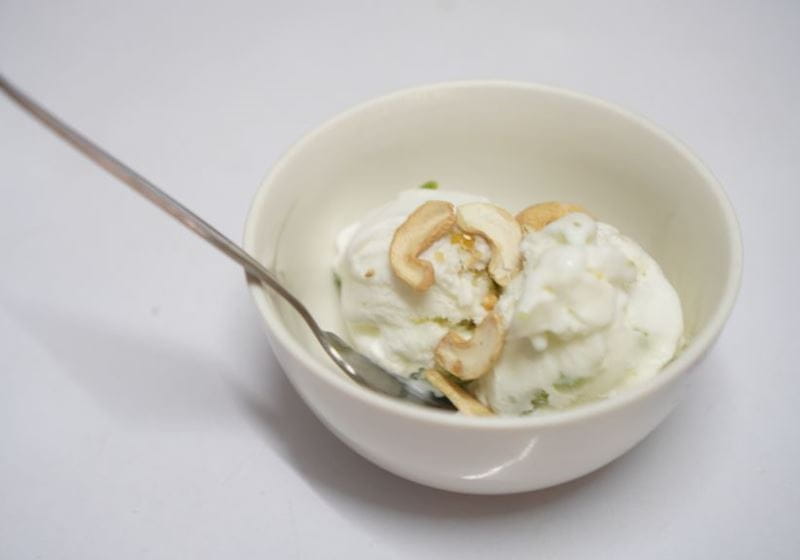
Almond, oat and soy-based options tend to be lighter and friendlier on the gut. A great pick for those avoiding dairy but still after a creamy treat. Bonus: they’re more sustainable too.
Watch out for: Don’t assume because they’re dairy free, they’re lower in calories or sugar.
“They can still be high in added sugars or saturated fat, especially coconut-based ones,” says Kranner. “Some versions also lack protein and important nutrients like calcium or vitamin B12, unless fortified.” Those made from coconut milk in particular have a much higher level of fat and sugar.
Her tip? Look for brands with minimal ingredients and unsweetened or lightly sweetened varieties to ensure you’re getting the healthiest version you can.
| Calories | 152kcal (Coconut – 192kcal) |
| Fat | 6.6g (Coconut – 12.2g) |
| Saturated fat | 5.4g (Coconut – 11.3g) |
| Sugar | 15g total sugars (Coconut – 17.3g) |
| Protein | 0.9g (Coconut – 1g) |
“Gelato has less air churned in, so the texture’s creamier despite having less fat than traditional ice cream,” explains registered dietitian Tew. “It’s also often made with simple, natural ingredients.”
Originating in Italy, gelato is typically served slightly warmer than ice cream, which enhances its bold, concentrated flavour. That intensity means a couple of scoops can go a long way and it’s why many people find it more satisfying than its fluffier, sugar-laden cousins.
Watch out for: Don’t let its smooth charm fool you, it’s still high in sugar and energy-dense. “You may need less of it to feel satisfied,” adds Ludlam-Raine, “but portion control still matters.”
| Calories | 189kcal |
| Fat | 7.8g |
| Saturated fat | 4.8g |
| Sugar | 18.2g |
| Protein | 4.5g |
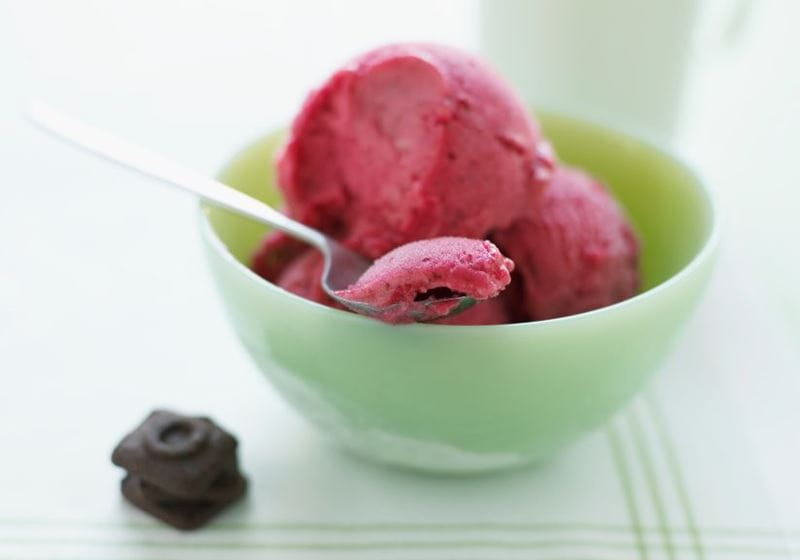
Light, fruity and often completely dairy-free, sorbets can feel like a virtuous choice, especially if you’re avoiding lactose or following a plant-based diet. They’re typically fat-free and refreshing, making them a popular pick in warmer weather.
“But they can be very high in sugar,” says Tew. “And without any fat or protein to balance things out, they can lead to quick spikes in blood sugar.”
Watch out for: Despite the fruit label, many sorbets are little more than sweetened ice. They can contain as much (or more) sugar than standard ice cream – just without the creamy distraction. And because they’re so light, it can be easy to overeat.
To avoid this, Kranner suggests using a small bowl – “it’s surprisingly effective at making you feel satisfied with less” – and avoid eating it from the tub as it’s easier to overeat.
| Calories | 86kcal |
| Fat | 0.2g |
| Saturated fat | 0.1g |
| Sugar | 19g |
| Protein | 0.3g |
Chewy, sweet and conveniently wrapped, mochi balls offer a playful twist on traditional ice cream. The soft, glutinous rice shell adds a satisfying texture, and their small size – around 70-80 kcal per ball – gives the impression of built-in portion control.
But don’t be fooled by their dainty appearance: “They feel light, so it’s easy to eat a few without realising,” says Tew.
Watch out for: “Some flavours can be surprisingly high in added sugars,” says Tew, which makes them dangerously moreish. It’s easy to go from one to four without blinking, so keep them as an occasional treat, rather than a health swap.
| Calories | 246kcal |
| Fat | 8.3g |
| Saturated fat | 6.2g |
| Sugar | 19g |
| Protein | 2.3g |
Simple, sweet and reliably scoopable, this is the kind of ice cream many of us grew up with and it still earns a place in the freezer. It’s often lighter in calories than the more indulgent tubs and, as Tew points out, “It’s simple, affordable, and a good option for pairing with other desserts.”
You’re unlikely to find gourmet ingredients here, but if you’re after something affordable to round off a meal, it does the job.
Watch out for: Don’t expect much in the way of nutrition. “These often use vegetable oils instead of cream, so you’re getting fewer nutrients,” notes Ludlam-Raine.
They’re also low in protein (just 1.8g per 100g) and often ultra-processed, with added stabilisers and emulsifiers to make up for the lack of real dairy.
| Calories | 180kcal |
| Fat | 6.3g |
| Saturated fat | 5.7g |
| Sugar | 17g |
| Protein | 1.8g |

Wrapped, ready and impossible not to associate with childhood summers, these grab-and-go classics offer the comfort of pre-portioned indulgence. Whether it’s a chocolate-dipped Magnum or a flake-topped 99, there’s something reassuringly familiar about them.
“They’re pre-portioned, which helps with mindful eating,” says Tew. You know exactly what you’re getting and there’s no temptation to polish off a whole tub while watching TV.
Watch out for: While portion-controlled, they’re often packed with sugar and saturated fat, especially the ones enrobed in chocolate or filled with caramel. One Cornetto-style cone can contain over 12g of saturated fat per 100g – that’s more than half the recommended daily intake for women.
| Calories | 272kcal |
| Fat | 15g |
| Saturated fat | 12g |
| Sugar | 17g |
| Protein | 2.7g |
Rich, creamy and packed with swirls, chunks and everything your sweet tooth dreams of, classic premium tubs are the dessert equivalent of wrapping yourself in a weighted blanket. “Delicious, indulgent, and satisfying,” says Tew, “this type of ice cream is often a more enjoyable experience because of the creamy texture and mix-ins.”
Made with a high percentage of dairy, they offer some protein and calcium and thanks to the fat content, even a small scoop can feel surprisingly filling. So, if you can resist diving back in for seconds (or thirds), you may not need much to feel satisfied.
Watch out for: These are some of the most energy-dense options in the freezer aisle – over 270 kcal, 13g fat and 27g of sugar per 100g. “It’s easy to eat large amounts quickly,” warns Tew, “so eat it mindfully and enjoy it!”
In other words: not everyday ice cream, but sometimes, exactly what you need.
| Calories | 273kcal |
| Fat | 13g |
| Saturated fat | 8.9g |
| Sugar | 27g |
| Protein | 3.6g |
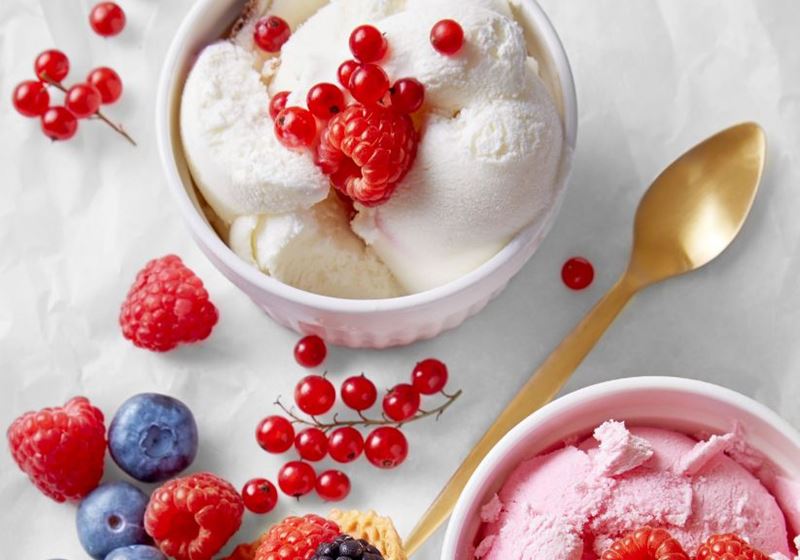
According to Kranner, ice cream doesn’t need to be off-limits, it just needs a little strategy. From portion control to smart pairings, here’s how to make your scoop work harder (without losing the joy).
Kranner recommends using a small bowl or ramekin rather than eating straight from the tub. A smaller portion looks more generous when it’s neatly contained and also helps avoid mindless overindulgence.
The best time to enjoy ice cream? After a balanced meal.
“Eating it after something that includes protein, fibre and healthy fats can slow down sugar absorption and help keep blood sugar more stable,” Kranner explains.
Sweet treats don’t need sprinkles and syrups to shine. Kranner suggests using toppings that not only add texture and flavour, but also nutritional benefits, such as:
These can all help slow digestion and make your dessert feel more substantial.
If you want a lighter alternative, Kranner recommends blending frozen bananas with a splash of sheep’s milk and vanilla for a naturally sweet, two-ingredient “nice cream”. Add almond butter, cocoa powder or a few frozen berries for variety.
"It’s genuinely delicious and super easy,” she says, and a great way to enjoy a frozen treat with less added sugar.
Jayne cut her online journalism teeth 24 years ago in an era when a dialling tone and slow page load were standard. During this time, she’s written about a variety of subjects and is just at home road-testing TVs as she is interviewing TV stars.
A diverse career has seen Jayne launch websites for popular magazines, collaborate with top brands, write regularly for major publications including Woman&Home, Yahoo! and The Daily Telegraph, create a podcast, and also write a tech column for Women’s Own.


Health insurance for people over 50 that provides a quicker route to diagnosis and planned medical treatment in a private facility.
Underwritten by Bupa Insurance Limited.